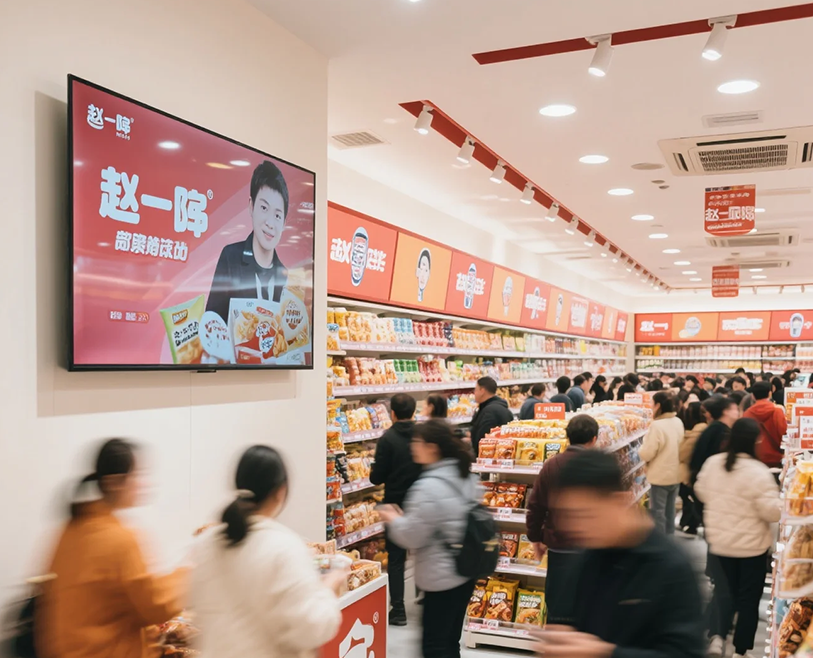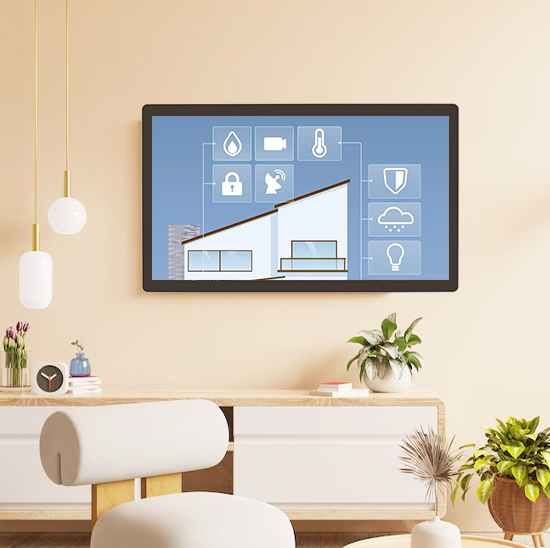W cyfrowej erze edukacji – gdzie zaangażowanie uczniów, spersonalizowana nauka, i dostępność technologii są podstawą sukcesu akademickiego — ekrany dotykowe do tabletów studenckich: Aplikacje edukacyjne stały się kamieniem węgielnym nowoczesnych sal lekcyjnych. W przeciwieństwie do tradycyjnych urządzeń z nieporęcznymi interfejsami, które utrudniają naukę, these specialized touch screens transform student tablets into intuitive tools that sync seamlessly with educational apps. For K-12 students, teachers, and school administrators, they enable hands-on learning, real-time feedback, and interactive content consumption—all while withstanding the demands of daily classroom use. Whether used for math problem-solving, language practice, science simulations, or creative projects, Student Tablet Ekran dotykowy bridge the gap between students and digital learning resources, making education more engaging and accessible. W tym artykule omówiono ich podstawowe funkcje, key applications in educational apps, i efektowne korzyści, helping schools and educators select touch screen solutions that enhance app functionality and drive student success.

Core Features of Student Tablet Touch Screen for Educational Apps
1. Czuły & Precyzyjne działanie dotykowe
The defining advantage of Student Tablet Touch Screens is their ability to support seamless interaction with educational apps—critical for active learning:
Wysoka czułość dotyku (≤1ms response): Registers light taps, precise swipes, and handwriting input instantly, ideal for apps like math problem solvers or note-taking tools (np., GoodNotes, Notability).
Pressure-sensitive input: Simulates pen-like precision for drawing apps (np., Procreate for Schools) or handwriting recognition, letting students write equations, sketch diagrams, or annotate texts naturally.
Obsługa wielodotyku: Aż do 10 simultaneous touch points enable collaborative app activities (np., group quizzes on Kahoot! or interactive whiteboard apps like Miro for Students).
2. Wytrzymały & Student-Ready Design
Student tablets face daily use, accidental drops, and frequent handling—and these touch screens are built to endure:
Szkło hartowane odporne na zarysowania: 3mm anti-glare glass resists scratches from backpacks, pencils, or accidental drops, maintaining clarity for educational content.
Impact-resistant build: Reinforced edges and shatterproof glass meet MIL-STD-810G standards for drop protection (aż do 1.2 metrów), suitable for elementary to high school use.
Fingerprint-resistant coating: Reduces smudges on the screen, ensuring clear visibility of app content (np., filmy, diagrams, tekst) without constant cleaning.
3. App Compatibility & Bezproblemowa integracja
These touch screens are optimized to work with the educational apps schools rely on:
Cross-platform app support: Compatible with iOS, Android, and ChromeOS educational apps (np., Duolingo for Schools, Khan Academy Kids, Klasa Google, Minecraft: Education Edition).
Low-latency app interaction: Eliminates lag when switching between apps, loading interactive content, or running graphics-heavy tools (np., science simulation apps like PhET).
Accessibility feature integration: Works with app-based accessibility tools (screen readers, text-to-speech, color filters) to support diverse learning needs (np., dysleksja, visual impairments).
4. Eye-Friendly & Ergonomic Features
To support long learning sessions without student fatigue:
Blue light reduction: TÜV-certified blue light filters reduce eye strain during extended app use (np., online classes, homework sessions).
High visibility display: 400+ nits brightness and high contrast ratios ensure clear visibility in classrooms (even with natural light) and dim study spaces.
Ergonomic touch dynamics: Light touch pressure requirements and intuitive gesture support (brzęczenie, obracać, ciągnąć) reduce hand fatigue for younger students or prolonged use.
5. Niskie koszty utrzymania & School-Ready Operation
For busy teachers and IT teams, these touch screens minimize upkeep:
Funkcjonalność typu plug-and-play: Works seamlessly with student tablets without additional software or complex setup, saving IT time.
Auto-calibration: Self-adjusts touch sensitivity regularly, ensuring consistent performance without manual calibration.
Energy-efficient design: Low-power consumption extends tablet battery life, supporting full school days of app-based learning without recharging.
Key Applications of Student Tablet Touch Screen in Educational Apps
1. Core Subject Learning (Matematyka, Nauka, Language Arts)
Educational apps for core subjects leverage touch screen functionality to deepen understanding:
Math apps: Students use touch to solve interactive equations (np., dragging numbers on Prodigy), graph functions (np., Desmos), or manipulate 3D geometry models (np., GeoGebra).
Science apps: Touch interaction enables virtual experiments (np., PhET’s physics simulations), dissecting digital specimens (np., Virtual Dissection Lab), or tracking weather patterns (np., NOAA Weather).
Language arts apps: Students write letters/words with touch (np., ABCmouse), annotate digital books (np., Epicki!), or record pronunciation (np., Duolingo) for real-time feedback.
2. Creative & Project-Based Learning
Touch screens unlock creativity in app-based projects, fostering collaboration and innovation:
Sztuka & design apps: Dotyk wrażliwy na nacisk obsługuje rysunek cyfrowy (np., Procreate for Schools), graphic design (np., Canva for Education), or animation (np., Stop Motion Studio).
Multimedia creation: Students use touch to film/edit videos (np., iMovie for Education), record podcasts (np., Anchor for Schools), or build presentations (np., Google Slides).
Coding apps: Touch-based coding platforms (np., ScratchJr, Tynker) let students drag-and-drop code blocks to create games or animations, learning programming basics intuitively.
3. Special Education & Inclusive Learning
Educational apps paired with ekrany dotykowe support diverse student needs:
Dyslexia support apps: Touch interaction simplifies text adjustment (np., font size, spacing on Read&Write) or audio narration (np., Voice Dream Reader) for easier comprehension.
Autism-friendly apps: Visual touch-based tools (np., Proloquo2Go for communication, Sensory Apps for calm-down activities) provide structured, engaging learning experiences.
ESL/ELL apps: Touch-enabled language apps (np., Rosetta Stone Kids, Babbel for Schools) let students practice vocabulary with interactive flashcards or pronunciation games.
4. Remote & Hybrid Learning
Touch screens enhance app-based learning in remote or hybrid classroom settings:
Video conferencing apps: Students use touch to raise hands (np., Zoom for Education), share screens (np., Spotkania Google), or submit answers via interactive polls (np., Mentimeter).
Homework & assignment apps: Touch interaction enables submitting digital work (np., Klasa Google), annotating feedback (np., Schoology), or accessing virtual tutoring (np., Khan Academy).
Self-paced learning apps: Students progress through personalized lessons (np., IXL, Khan Academy Kids) with touch, tracking their own growth and revisiting concepts as needed.
Benefits of Student Tablet Touch Screens for Educational Apps
1. Większe zaangażowanie uczniów & Aktywna nauka
Passive learning is replaced with hands-on interaction, boosting interest and participation:
Touch-based app activities increase student engagement by 70% vs. traditional textbook learning, z 85% uczniów deklaruje większe zainteresowanie tematami zajęć.
Active interaction (np., manipulating digital models, solving interactive quizzes) improves knowledge retention by 45%, as students “learn by doing” rather than memorizing.
2. Personalized Learning Experiences
Touch screens enable apps to adapt to individual student needs and paces:
Educational apps use touch input data to tailor lessons (np., adjusting difficulty on IXL based on correct/incorrect answers), ensuring students learn at their optimal speed.
Customizable touch features (np., font size, touch sensitivity) let students personalize their learning environment, reducing barriers for diverse learners.
3. Enhanced Teacher Efficiency & Classroom Management
Touch screen-enabled apps simplify lesson delivery and student assessment:
Teachers use apps to assign interactive tasks (np., Google Forms quizzes), track progress in real time (np., ClassDojo), or provide instant feedback (np., Seesaw), saving 2–3 hours weekly on grading.
Collaborative touch-based apps (np., Miro, Padlet) facilitate group work, letting teachers monitor multiple student teams simultaneously.
4. Improved Accessibility & Equity in Learning
Touch screens make educational apps accessible to all students, narrowing the digital divide:
Intuitive touch interaction reduces learning curves for tech-unfamiliar students or those with motor skill challenges, ensuring equal access to app-based resources.
Funkcje ułatwień dostępu (blue light reduction, screen readers) support students with disabilities, making education more inclusive and equitable.
FAQs About Student Tablet Touch Screens for Educational Apps
Pytanie 1: Will young students (elementary school) find the touch screen easy to use?
A1: Tak. Interfejs jest intuicyjny, with large touch targets and simple gestures (ciągnąć, tap) that align with young learners’ motor skills. Most students master basic app interaction within 1–2 class sessions.
Pytanie 2: Are these touch screens compatible with all educational apps used in our school (np., Klasa Google, Khan Academy)?
A2: Absolutnie. They work with all leading educational apps (iOS, Android, Chrome OS) and integrate seamlessly with school platforms like Google Workspace for Education, Microsoftu 365 Edukacja, and Canvas.
Pytanie 3: How durable are the touch screens for daily student use (np., accidental drops, zadrapania)?
A3: Bardzo trwałe. The 3mm tempered glass, impact-resistant build, and MIL-STD-810G drop certification withstand daily classroom use—even with younger students. They’re tested to resist 100,000+ touches and drops from 1.2 metrów.
Pytanie 4: Can the touch screen support handwriting recognition for note-taking apps (np., GoodNotes, Notability)?
A4: Tak. Pressure-sensitive touch technology accurately captures handwriting, converting it to text if needed. It works seamlessly with note-taking apps, letting students write naturally without typing.
Pytanie 5: What warranty coverage do student tablet touch screens include?
A5: All models come with a 3-year warranty covering scratches, problemy z reakcją na dotyk, and manufacturing defects. Extended 5-year warranties are available for high-use classroom environments.
Wniosek
Student Tablet Touch Screens are a transformative tool for educational apps, turning passive screen time into active, engaging learning experiences. By combining responsive touch performance, trwała konstrukcja, and seamless app integration, they empower students to learn by doing—whether solving math problems, creating digital art, or collaborating on projects. For educators and school administrators looking to enhance classroom engagement, personalize learning, and support diverse student needs, Te ekrany dotykowe zapewniają natychmiastową wartość i długoterminowe korzyści akademickie. They’re not just a hardware upgrade—they’re a gateway to more inclusive, effective, and enjoyable education.
Ready to equip your students’ tablets with high-performance touch screens for educational apps? Wypełnij formularz na naszej stronie internetowej, aby skontaktować się z naszymi ekspertami w dziedzinie technologii edukacyjnych. We’ll assess your school’s app ecosystem, demonstrate compatibility with your existing tools, i zapewnij spersonalizowaną propozycję rozwiązania – pomagając Ci stworzyć angażujące treści, interactive learning experiences that drive student success.


